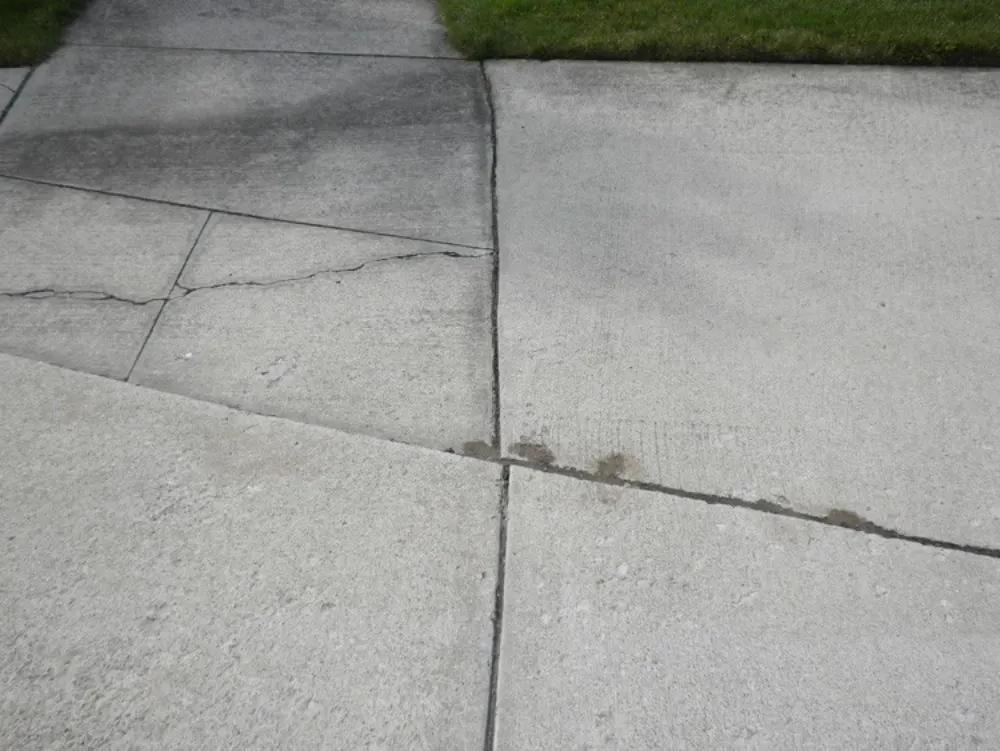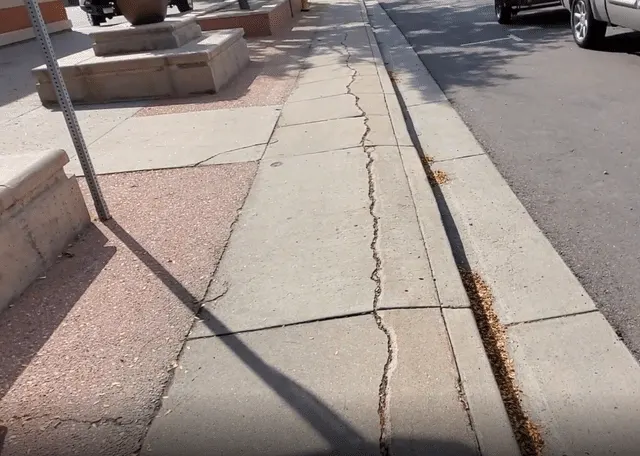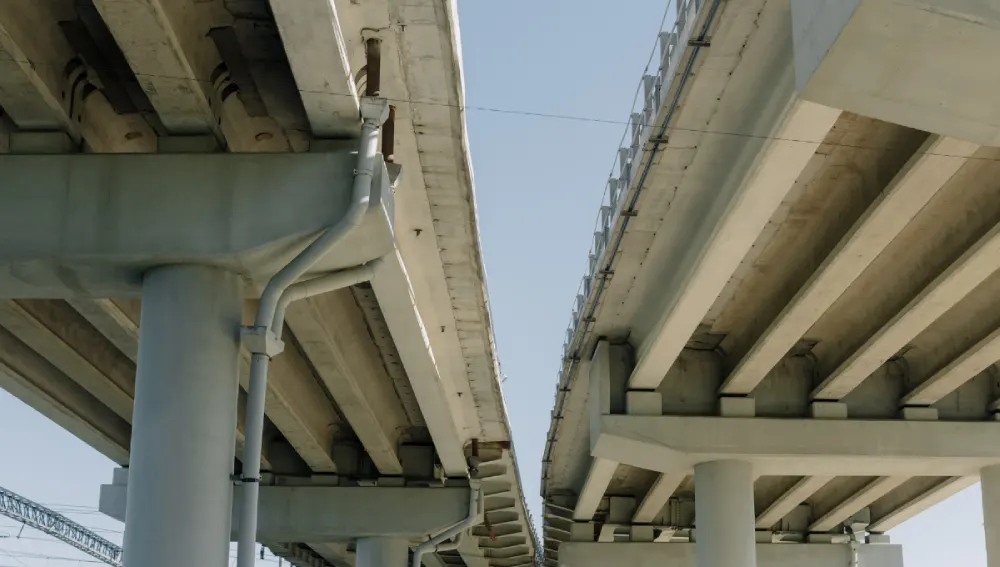Considered one of the most durable materials for construction, Concrete is the most widely used material globally. However, concrete isn’t always reliable and is prone to damage if not constructed properly. The material must be handled carefully during construction to ensure that the structure can withstand stress and load.

What is Concrete Creep?
Concrete creep is the deformation of a structure due to stress or sustained load. The shape of the concrete in a structure can change because of prolonged pressure and heavy load. Usually, this deformation of concrete occurs towards the direction of the force applied. For example, bending in a beam is caused by the continuous force on the beam surface.
Levels of Creep
There are various levels to a concrete creep based on the intensity of the force and the time the structure is exposed to stress. They are:
- Primary Creep – This is the initial creep when a load or stress is applied to the concrete. At this level, there is an immediate elastic strain on the concrete.
- Secondary Creep – When the load is sustained for a prolonged period, it leads to the level of Secondary creep.
- Tertiary Creep – this is the final level of creep where the structure eventually breaks because of excessive force and pressure.

Factors influencing concrete creep
Aggregate
Aggregates are coarse particles and materials like rocks, gravel, recycled concrete and sand. This reduces the creep rate as it has a high restraining effect. High elastic modulus in aggregates lowers the level of creeping in a structure. Also, the size of the aggregate contributes to the creep. Large-sized aggregates often lower the creep.
Concrete Mix Ratio
The quantity and quality of the concrete mix play a crucial role in preventing or lowering creep. The water-to-cement ratio must be right to achieve a quality mix of the concrete. When the water content increases, it leads to a higher creep rate. Also, other factors, such as the use of low quality component materials, have an impact on concrete creep.
Cement Properties
Different types of cement have different effects on the strength of the concrete. For example, if the cement is finer, it requires more gypsum to make it denser. Stronger and denser cement is less susceptible to concrete creep. Therefore, choosing the right cement is imperative to prevent creep.
Environmental Cconditions
Various environmental factors like temperatures and humidity can have significant effects on concrete. High temperature can lead to an increase in creep as the concrete expands when it is exposed to heat. This leads to deformation and damage of the structure. Also, concrete absorbs water. Due to this nature, high humidity can increase the rate of creep, eventually leading to deformity of the structure.
Stress Intensity
When the concrete is exposed to excess tension, it can lead to an increased levels of creep. Duration of the stress too is key in creep. Constant level of stress over a prolonged period of time can cause creep swiftly.
Age of Concrete & Loading
Concrete takes time to strengthen and become hard. When the concrete surface is exposed to heavy loads during early stages, it can lead to concrete creep. Therefore, the application of heavy load should be avoided at the early stages of the setting period.
| Age of loading | Creep coefficient |
| 7 days | 2.2 |
| 28 days | 1.6 |
| 1 year | 1.1 |
Source: Civil Engineering Portal

Effects of Concrete creep
- Creep increases the deflection of reinforced concrete beams and structures, leading to alterations in design strength.
- Concrete creep creates buckling in eccentrically loaded columns in a structure.
- The deformation of concrete can lead to cracks, especially in high-stress regions. In structures like dams, it is important to monitor the structure for cracks periodically to prevent excessive damage.
- Creep can relieve stress concentration on surfaces which is caused by shrinkage and temperature variation. This helps in reducing internal stress.
- Creep affects the overall structural performance as it causes loss of prestress in prestressed concrete.
Preventing Concrete Creep
Various steps and preventive measures can be taken to mitigate the amount of concrete creep. It is imperative to follow protocols to maintain the strength and longevity of a structure.
Creep Testing
A Creep Test is nothing but a method involving calculations which determine the creep potential. Engineers take in several determinants like temperature and duration of stress applied to the structure while creep testing. Typically, they come up with a graph which depicts the creep behaviour in various stages. This helps to forecast the concrete creep and take necessary steps during construction to prevent adverse effects.
Adding Aggregates
Adding more coarse aggregates to the cement helps in preventing concrete creep. The high modulus of elasticity in aggregates lowers the creep rate. Limestone, granite, sandstone and quartz work best when it comes to lowering concrete creep.
Choosing the Right Type of Concrete
There are various types of concrete with different properties. Choosing the right type based on the structure is important to lower creep. Few types of concrete, such as fibre-reinforced concrete and high-strength concrete, are better at preventing creep.
Adding Reinforcements
Reinforcements can mitigate the possibility of cracks and damage to concrete surfaces. Steel mesh, fibre and rebars can help increase the strength of the structure and ensure longevity.
Prestressing
Proper prestressing helps in preventing the effects of creep. Post-tensioned and pre-tensioned concrete assist in balancing initial stresses and reducing the chances of deformation.
Paying Attention to the Curing Process
Not following the curing process protocol can result in adverse effects of creep and eventually lead to damage to the structure. Proper measures must be taken to ensure that the concrete dries slowly in the initial phase of curing. Fogging the concrete and using evaporation retarders help slow down the drying process. Also, maintaining the level of moisture in the final curing is imperative. Ponding the concrete and covering helps retain the moisture on the surface.

Engineers can implement appropriate measures to mitigate the effects of creep by understanding the causes and behaviour of concrete structures. Appropriate design, construction techniques and creep analysis are crucial in ensuring the durability of concrete structures.

